#Software Engineering Roadmap
Explore tagged Tumblr posts
Text
Is the Software Engineering Roadmap Essential for Aspiring Developers?
Embark on a structured journey through the evolving world of software engineering with our Software Engineering Roadmap. Designed to guide professionals at any stage of their career, this roadmap outlines key skills, cutting-edge technologies, and industry best practices. From foundational programming languages to advanced software architecture and agile methodologies, it provides a clear path for growth and specialization. Equip yourself with the knowledge and skills to thrive in the dynamic field of software engineering and stay competitive in the tech industry.
0 notes
Text
october 1st 2024: drafts!

preacher: i'm attaching slightly improved versions of our original drafts, but i'll also include mine and scott's garbage sketches under the cut because i think they're a little bit funny

(image id available through tumblr's accessibility options)
this is a slightly revised version of my original concept for "APRIL".
the main functionality i wanted for "APRIL" was for her to be able to read out words from the templeOS god word app, and ideally without needing keyboard input – hence the microphone. ideally all of her parts are going to fit inside a hollowed out mannequin or doll, which will probably just be the torso, so that she's more portable. for the same reason, i want her to run off a power bank – i want to be able to take her places!
if we manage, we're going to give her an animated LED face which moves to indicate when she's speaking. the way i first pitched it, i wanted it to also change a bit depending on how she "felt" – for example, frowning if the environment was hotter than ideal for the raspberry pi to operate on. but that's a bit beyond our current scope right now. i don't think we even ordered a thermostat.
scott drew the following wiring diagrams based off my original sketch. here revised digitally for readability's sake.
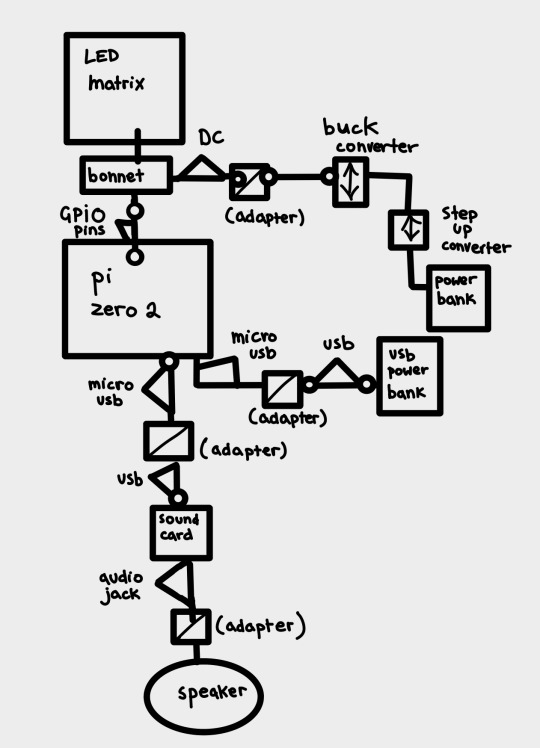
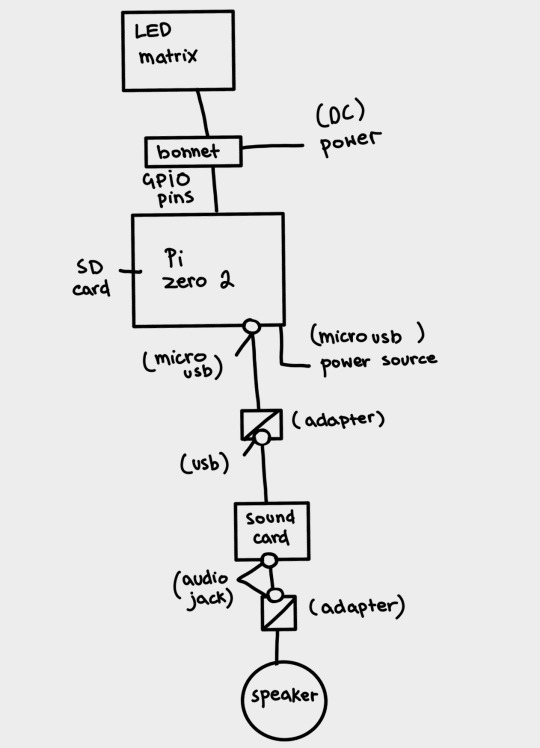
(image id available through the tumblr accessibility options although i fear it's not very good in this case. feedback appreciated).
scott: I decided to go with the raspberry pi zero 2w because it's what I've got experience coding on, it's relatively cheap for the "brains" of the operation (heh) and can perform both tasks from the godword prophecy generation, speaker operation and led matrix operation simultaneously. Plus its small enough to keep the circuit lightweight and fit inside the initial mannequin design.
This drawing fits no kind of engineering standard by the way lol. It was an initial sketch closer to a wiring diagram to see how it'd physically setup and wrap my head around transforming it from mains power to being theoretically portable and running on powerbanks. Unfortunately the LED matrix is really fucking power hungry so needs its own power supply of really specific voltage and current draws hence all the converters.
Also because Im using the smaller and cheaper pi, as oppossed to a stronger system like the pi4, it doesn't have any audio out jack so I plan to use the micro usb for audio out which means yet again I need another adapter for a soundcard and usb to micro usb adapters and all that jazz. Usually sound out can be done through the GPIO pins but the LED matrix takes so many pins that I cant really take anything form them so I had to look for other ways of doing it. Plus this way I get to add a soundcard so if we wanna add microphone support or anything later on we can :)
(Also this is all a little obtuse because I'm trying to do it as much as plug and play and screw terminal style as possible rather than actually solder connections for ease of access and initial setup, but this also works for modular design and component swapping later too so its cool.)
preacher: another reason we're going with plug&play is becauuseeeeee i don't own a soldering iron 😭 it's ok. it's ok.
our silly initial drafts under the cut for your viewing pleasure.

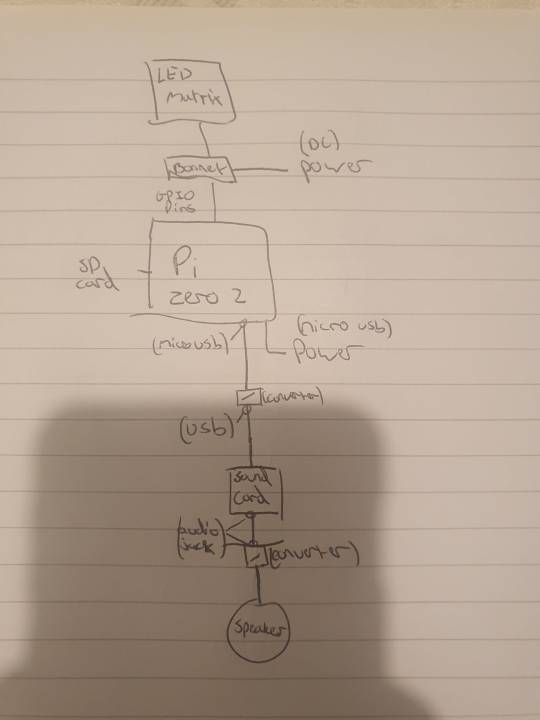
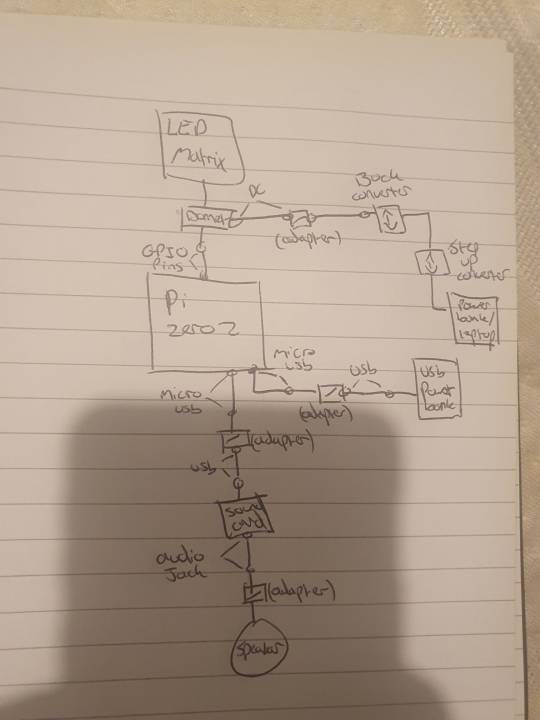
preacher: these were made around 2 weeks ago, so about september 15th ish.
as you can see the first "APRIL" drawing was beautifully drawn with my fat fingers in the facebook messenger photo editor. i think it holds up. lol.
#computers#computer#programming#software engineering#robots#robotics#raspberry pi#robot girl#machine#machines#divine machinery#tech#technology#techcore#machinecore#objectum#objectophilia#robophilia#techum#technum#android#gynoid#mechanical divinity#templeos#coding#scott#preacher#drafts#update#roadmap
30 notes
·
View notes
Text
#software development#app development#android app development#mobile application development#software development career#mobile app development career#software development engineer#game development#mobile app development community#mobile app development cost in bangladesh#software development roadmap#mobile app development#indie game development#mobile app development resources#development tools#enterprise company#inclusive and accessible hiring policies
1 note
·
View note
Text
Master DevOps: Your Complete Guide and Roadmap | DevOps Online Training

Introduction to DevOps
In today's rapidly evolving technological landscape, the need for streamlined and efficient software development practices has never been greater. Enter DevOps—a culture, philosophy, and set of practices that bring development (Dev) and operations (Ops) together to improve collaboration, integration, and automation throughout the software development lifecycle. DevOps is not just a buzzword; it's a transformative approach that enables organizations to deliver high-quality software faster and more reliably. If you're looking to build a career in this field, DevOps Online Training is your gateway to mastering the skills required to excel in this domain.
What is DevOps?
DevOps is a combination of practices, tools, and cultural philosophies designed to increase an organization's ability to deliver applications and services at high velocity. By breaking down the traditional silos between development and operations teams, DevOps fosters a culture of collaboration, where both teams work together throughout the entire software development lifecycle. This collaboration leads to faster development, more frequent deployment of updates, and higher overall software quality.
At its core, DevOps emphasizes automation, continuous integration, continuous delivery (CI/CD), and monitoring. The goal is to minimize manual intervention, reduce errors, and improve the efficiency of software development and deployment. Through DevOps Online Training, you can learn how to implement these practices in real-world scenarios, making you an invaluable asset to any tech organization.
How DevOps Works
DevOps is built on a set of principles and practices that enable organizations to build, test, and deploy software rapidly and efficiently. Here's how DevOps works in practice:
1. Continuous Integration and Continuous Deployment (CI/CD)
Continuous Integration (CI) is the practice of merging code changes frequently, often multiple times a day, into a shared repository. Automated testing is then conducted to identify and resolve issues early in the development process. Continuous Deployment (CD) takes this a step further by automatically deploying code changes to production after passing the CI pipeline. Together, CI/CD reduces the time between writing code and delivering it to customers, ensuring that software updates are released frequently and reliably.
2. Automation
Automation is a critical component of DevOps. From building and testing code to deploying and monitoring applications, automation helps streamline the entire software development lifecycle. By automating repetitive tasks, teams can focus on more strategic activities, such as optimizing code and improving system performance. Automation tools like Jenkins, Ansible, and Puppet are commonly used in DevOps to create efficient, repeatable processes.
3. Infrastructure as Code (IaC)
Infrastructure as Code (IaC) is the practice of managing and provisioning computing infrastructure through machine-readable scripts rather than manual processes. This approach allows teams to automate the setup and configuration of environments, ensuring consistency across development, testing, and production stages. Tools like Terraform and AWS CloudFormation are popular choices for implementing IaC.
4. Monitoring and Logging
Effective monitoring and logging are essential to maintaining the health and performance of applications in a DevOps environment. By continuously monitoring systems and capturing logs, teams can identify and resolve issues before they impact end-users. Tools like Prometheus, Grafana, and ELK Stack are widely used for monitoring and logging in DevOps.
5. Collaboration and Communication
DevOps is as much about culture as it is about technology. A key aspect of DevOps is fostering a culture of collaboration and communication between development, operations, and other stakeholders. This collaboration ensures that everyone is aligned with the project's goals and that issues are addressed quickly. Tools like Slack, Microsoft Teams, and Jira facilitate communication and collaboration in a DevOps environment.
6. Security in DevOps (DevSecOps)
As security becomes increasingly important in software development, DevOps practices have evolved to include security as a core component. DevSecOps integrates security into every stage of the software development lifecycle, ensuring that security vulnerabilities are identified and addressed early in the process. By adopting DevSecOps practices, organizations can build more secure applications without compromising on speed and agility.
The Roadmap to Becoming a DevOps Engineer
Becoming a DevOps engineer requires a combination of technical skills, practical experience, and a deep understanding of DevOps principles. Here's a step-by-step roadmap to guide you on your journey:
1. Understand the Basics of DevOps
Before diving into specific tools and technologies, it's important to understand the fundamental principles of DevOps. Learn about the core concepts of CI/CD, automation, IaC, and monitoring. DevOps Online Training can provide you with a solid foundation in these areas, helping you grasp the essential elements of DevOps.
2. Gain Proficiency in Programming and Scripting
A strong foundation in programming and scripting is essential for a DevOps engineer. Start by learning a programming language like Python, Ruby, or Go, as well as scripting languages like Bash or PowerShell. These skills will enable you to automate tasks, write custom scripts, and work with various DevOps tools.
3. Master Version Control Systems
Version control systems (VCS) like Git are critical to DevOps practices. Learn how to use Git for version control, branching, and merging code. Understand how to collaborate with other developers using GitHub, GitLab, or Bitbucket. Version control is a fundamental skill that every DevOps engineer must possess.
4. Get Hands-On with CI/CD Tools
CI/CD is at the heart of DevOps, so gaining hands-on experience with CI/CD tools is crucial. Learn how to set up and configure Jenkins, CircleCI, or Travis CI to automate the build, test, and deployment processes. DevOps Online Training often includes practical labs and exercises that allow you to practice using these tools in real-world scenarios.
5. Learn About Infrastructure as Code (IaC)
IaC is a key practice in DevOps, enabling teams to manage and provision infrastructure programmatically. Familiarize yourself with IaC tools like Terraform, AWS CloudFormation, and Ansible. Learn how to write scripts that automate the creation and configuration of infrastructure, ensuring consistency across environments.
6. Develop Cloud Computing Skills
Cloud computing is an integral part of DevOps, as it provides the scalability and flexibility needed for modern software development. Gain proficiency in cloud platforms like AWS, Azure, or Google Cloud. Learn how to deploy applications to the cloud, manage cloud resources, and work with cloud-based DevOps tools.
7. Enhance Your Automation Skills
Automation is a cornerstone of DevOps, so it's essential to master automation tools and techniques. Learn how to automate tasks using tools like Jenkins, Puppet, and Chef. Understand how to create automated workflows that integrate with other DevOps tools and processes.
8. Learn About Monitoring and Logging
Effective monitoring and logging are crucial for maintaining the health of applications in a DevOps environment. Familiarize yourself with monitoring tools like Prometheus and Grafana, as well as logging tools like the ELK Stack. Learn how to set up monitoring dashboards, create alerts, and analyze logs to identify and resolve issues.
9. Embrace DevSecOps Practices
Security is a critical aspect of DevOps, and understanding DevSecOps practices is essential for a successful career in this field. Learn how to integrate security into the CI/CD pipeline, conduct security testing, and implement security best practices throughout the software development lifecycle.
10. Gain Practical Experience
Theory alone is not enough to become a proficient DevOps engineer. Hands-on experience is crucial. Work on real-world projects, contribute to open-source DevOps projects, or participate in internships. Practical experience will help you apply the skills you've learned and build a portfolio that showcases your expertise.
11. Obtain DevOps Certifications
Certifications can validate your skills and make you stand out in the job market. Consider obtaining certifications like AWS Certified DevOps Engineer, Google Cloud DevOps Engineer, or Microsoft Certified: Azure DevOps Engineer Expert. These certifications demonstrate your proficiency in DevOps practices and tools.
12. Stay Updated with Industry Trends
The field of DevOps is constantly evolving, with new tools and practices emerging regularly. Stay updated with industry trends by reading blogs, attending conferences, and participating in online communities. DevOps Online Training programs often include updates on the latest trends and tools in the industry.
13. Build a Strong Professional Network
Networking is important in any career, and DevOps is no exception. Join DevOps communities, attend meetups, and connect with other professionals in the field. Building a strong network can lead to job opportunities, collaborations, and valuable insights.
14. Prepare for DevOps Interviews
As you near the end of your learning journey, it's time to prepare for DevOps interviews. Practice common DevOps interview questions, participate in mock interviews, and review your projects and experiences. DevOps Online Training programs often include interview preparation sessions to help you succeed in landing your first DevOps job.
Conclusion
DevOps is a powerful approach that has revolutionized the way software is developed, tested, and deployed. By fostering collaboration between development and operations teams and leveraging automation, CI/CD, and cloud computing, DevOps enables organizations to deliver high-quality software at a rapid pace. Whether you're just starting your career or looking to transition into the field, DevOps Online Training can provide you with the skills and knowledge needed to succeed as a DevOps engineer.
By following the roadmap outlined in this article, you can develop the technical expertise, practical experience, and industry knowledge required to excel in DevOps. Remember to stay updated with the latest trends, build a strong network, and continuously improve your skills.
#devops#devopsonlinetraining#devops engineer#DevOps Roadmap#web development#development#software#Continuous Integration#Continuous Deployment#Cloud Computing#Automation#Software Development#IT Training#cicd#it training institute#it training courses#it training classes
0 notes
Text
🚀 The best and ultimate frontend roadmap in 2023
Check out the link below:
#coding#developer#javascript#coder#python#roadmap#frontend development#software#software development#software engineering#viral
1 note
·
View note
Text
What has Google killed lately
IoT products.
Last year, the teams responsible for Pixel hardware and Android software were merged into one division, and Google today announced a “voluntary exit program” for employees working in the Platforms & Devices group.
SVP Rick Osterloh sent out a memo to employees this morning about the “voluntary exit program,” and the company confirmed to 9to5Google that this is happening.
This program applies to US employees working on Platforms & Devices, which includes Android (Auto, TV, Wear OS, XR), Chrome, ChromeOS, Google Photos, Google One, Pixel, Fitbit, and Nest. Google has many people around the world working on these products, but today’s announcement is just for those stateside.
Meanwhile, this is not a company-wide offer that applies to Search, AI, or other groups, though Alphabet’s new CFO last October said “driving further efficiencies” was a key priority.
Separately, software and hardware were already two very large organizations, with some overlap. Now that things have settled in recent months, employees have a better idea of their roles. Osterloh said the division received questions about the possibility of voluntary exits since the Pixel-Android merger. Not offering people the option to leave in advance was a complaint about how Google handled past layoffs.
The memo frames this exit program as being beneficial for those who might not be aligned or passionate about the combined organization’s mission or are having difficulty with their roles, and hybrid working requirements.
In leaving Google, employees will get a severance package, with more details internally coming soon. From what we learned, this change does not coincide with any product roadmap changes.
Before the merger, the Google hardware division last January switched to a functional organization model where there is one team (and leader) for teams like hardware engineering across Pixel, Nest, and Fitbit. At the same time, a few hundred roles were cut. The broader unification in April was designed to “speed up decision-making” internally.
In offering this program today, Google wants employees “to be deeply committed to our mission and focused on building great products, with speed and efficiency.” The statement also makes reference to “tremendous momentum” and “so much important work ahead.” Google’s full statement is below.
The Platforms & Devices team is offering a voluntary exit program that provides US-based Googlers working on this team the ability to voluntarily leave the company with a severance package. This comes after we brought two large organizations together last year. There’s tremendous momentum on this team and with so much important work ahead, we want everyone to be deeply committed to our mission and focused on building great products, with speed and efficiency.
63 notes
·
View notes
Text
Palantir, the software company cofounded by Peter Thiel, is part of an effort by Elon Musk’s so-called Department of Government Efficiency (DOGE) to build a new “mega API” for accessing Internal Revenue Service records, IRS sources tell WIRED.
For the past three days, DOGE and a handful of Palantir representatives, along with dozens of career IRS engineers, have been collaborating to build a single API layer above all IRS databases at an event previously characterized to WIRED as a “hackathon,” sources tell WIRED. Palantir representatives have been onsite at the event this week, a source with direct knowledge tells WIRED.
APIs are application programming interfaces, which enable different applications to exchange data and could be used to move IRS data to the cloud and access it there. DOGE has expressed an interest in the API project possibly touching all IRS data, which includes taxpayer names, addresses, social security numbers, tax returns, and employment data. The IRS API layer could also allow someone to compare IRS data against interoperable datasets from other agencies.
Should this project move forward to completion, DOGE wants Palantir’s Foundry software to become the “read center of all IRS systems,” a source with direct knowledge tells WIRED, meaning anyone with access could view and have the ability to possibly alter all IRS data in one place. It’s not currently clear who would have access to this system.
Foundry is a Palantir platform that can organize, build apps, or run AI models on the underlying data. Once the data is organized and structured, Foundry’s “ontology” layer can generate APIs for faster connections and machine learning models. This would allow users to quickly query the software using artificial intelligence to sort through agency data, which would require the AI system to have access to this sensitive information.
Engineers tasked with finishing the API project are confident they can complete it in 30 days, a source with direct knowledge tells WIRED.
Palantir has made billions in government contracts. The company develops and maintains a variety of software tools for enterprise businesses and government, including Foundry and Gotham, a data-analytics tool primarily used in defense and intelligence. Palantir CEO Alex Karp recently referenced the “disruption” of DOGE’s cost-cutting initiatives and said, “Whatever is good for America will be good for Americans and very good for Palantir.” Former Palantir workers have also taken over key government IT and DOGE roles in recent months.
WIRED was the first to report that the IRS’s DOGE team was staging a “hackathon” in Washington, DC, this week to kick off the API project. The event started Tuesday morning and ended Thursday afternoon. A source in the room this week explained that the event was “very unstructured.” On Tuesday, engineers wandered around the room discussing how to accomplish DOGE’s goal.
A Treasury Department spokesperson, when asked about Palantir's involvement in the project, said “there is no contract signed yet and many vendors are being considered, Palantir being one of them.”
“The Treasury Department is pleased to have gathered a team of long-time IRS engineers who have been identified as the most talented technical personnel. Through this coalition, they will streamline IRS systems to create the most efficient service for the American taxpayer," a Treasury spokesperson tells WIRED. "This week, the team participated in the IRS Roadmapping Kickoff, a seminar of various strategy sessions, as they work diligently to create efficient systems. This new leadership and direction will maximize their capabilities and serve as the tech-enabled force multiplier that the IRS has needed for decades.”
The project is being led by Sam Corcos, a health-tech CEO and a former SpaceX engineer, with the goal of making IRS systems more “efficient,” IRS sources say. In meetings with IRS employees over the past few weeks, Corcos has discussed pausing all engineering work and canceling current contracts to modernize the agency’s computer systems, sources with direct knowledge tell WIRED. Corcos has also spoken about some aspects of these cuts publicly: “We've so far stopped work and cut about $1.5 billion from the modernization budget. Mostly projects that were going to continue to put us down the death spiral of complexity in our code base,” Corcos told Laura Ingraham on Fox News in March. Corcos is also a special adviser to Treasury Secretary Scott Bessent.
Palantir and Corcos did not immediately respond to requests for comment
The consolidation effort aligns with a recent executive order from President Donald Trump directing government agencies to eliminate “information silos.” Purportedly, the order’s goal is to fight fraud and waste, but it could also put sensitive personal data at risk by centralizing it in one place. The Government Accountability Office is currently probing DOGE’s handling of sensitive data at the Treasury, as well as the Departments of Labor, Education, Homeland Security, and Health and Human Services, WIRED reported Wednesday.
12 notes
·
View notes
Text
Kickstart Your Earnings with Content Writing: A Beginner’s Friendly Roadmap
If you’ve ever wondered how ordinary people turn their words into cash, content writing might be your sweet spot. You don’t need a fancy degree or decades of experience to get started. With some guidance, dedication, and a dash of creativity, you can start earning from content writing sooner than you think. This guide walks you through each step in a friendly, down‑to‑earth way so you’ll feel confident launching your freelance writing journey.

Why Content Writing Is a Great Starting Point Content writing covers everything from blog posts and web pages to social media captions and product descriptions. Businesses of all sizes need fresh, engaging words to connect with their audience, rank higher in search engines, and boost sales. As companies continue to invest in digital marketing, demand for quality content writers stays strong. Plus, you can work from anywhere, set your own hours, and choose projects that spark your interest.
Understanding the Basics of Earning from Content Writing At its core, earning from content writing means providing value through written words. Clients pay for:
Research that saves them time
SEO‑friendly copy that boosts visibility
Clear, engaging storytelling that connects with readers
Consistent output that maintains an active online presence
Your job is to become the go‑to person who delivers those benefits reliably.
Step 1: Identify Your Niche and Strengths While generalists can find work, specializing helps you stand out. Consider topics you enjoy or know well—travel, personal finance, health and wellness, tech, lifestyle, parenting, gaming, or education. Having a niche makes it easier to showcase your expertise and justify higher rates. If you’re a fitness buff who loves writing, focus on blogs and articles in that sphere. If you have a background in software, aim for tech how‑to guides.
Step 2: Build a Portfolio That Shows Your Skills Clients want proof you can write well. Even if you haven’t been paid yet, you can create sample pieces:
Start a personal blog or Medium page and publish 3 to 5 high‑quality articles in your niche.
Guest post on small blogs that accept submissions.
Rewrite or summarize existing news stories in your voice (clearly marked as samples).
Draft mock project pieces for imaginary clients—product descriptions, newsletters, or landing pages.
Organize these in a simple online portfolio. You can use free tools like Google Sites, Wix, or WordPress. Make sure each sample highlights your SEO skills by including relevant keywords naturally in titles and subheadings.
Step 3: Optimize Your Online Profiles for Visibility Next, set up profiles on freelance platforms and job boards. Popular destinations include Upwork, Fiverr, Freelancer, ProBlogger, Contena, and LinkedIn. When crafting your profile:
Write an engaging headline that includes “content writer” or “freelance writer.”
Summarize your background, niche focus, and any standout achievements.
List your portfolio samples or link directly to your site.
Add relevant skills: SEO, WordPress, SEMrush, Mailchimp, social media management, etc.
Request testimonials from friends or colleagues who can vouch for your work ethic or writing ability.
A well‑optimized profile boosts your chances of appearing in client searches and winning invitations.
Step 4: Find Your First Paid Gigs Landing that first paid project often takes persistence. Strategies that work:
Pitch directly to small businesses or local startups. Send personalized emails offering a free trial article or website audit.
Apply to relevant listings daily on freelance boards. Tailor each proposal to the client’s needs—mention specifics from their job post.
Explore niche‑specific boards like BloggingPro or JournalismJobs for targeted opportunities.
Network on LinkedIn by sharing helpful writing tips, engaging with posts in your niche, and connecting with marketing professionals.
Early on, you might accept lower‑priced gigs to build credibility, but avoid underpricing yourself. Aim for a rate you can increase once you’ve racked up 5 to 10 positive reviews.
Step 5: Master SEO and Content Strategy SEO savvy writers command better fees. Search Engine Optimization involves understanding how keywords, user intent, and readability affect rankings. To shine:
Use free keyword research tools like Google Keyword Planner or Ubersuggest to identify target phrases.
Incorporate primary keywords in titles, opening paragraphs, subheadings, and naturally throughout the text.
Keep sentences concise, break up text with subheadings, and add bullet lists or numbered steps for scannability.
Learn basic on‑page SEO: meta descriptions, internal linking, image alt text, and proper URL structure.
Businesses pay for measurable results. If your copy ranks higher and drives traffic, you become more valuable.
Step 6: Set Competitive Rates and Payment Terms Knowing how much to charge can feel tricky. Common approaches include:
Per‑word rate: New freelance writers often start at five to ten cents per word, moving up to twenty cents or more with experience.
Per‑hour rate: Beginners might charge twenty to thirty dollars per hour, progressing to fifty and beyond as skills sharpen.
Per‑project fee: Flat rates for complete blog posts or web pages, factoring in research, revisions, and strategy.
Always agree on payment milestones. A 50/50 split works—half up front, half on completion. Use contracts to outline deliverables, deadlines, and revision policies. This keeps both sides on the same page.
Step 7: Deliver Quality and Build Long‑Term Relationships Repeat clients are freelancing gold. To keep clients coming back:
Meet deadlines without reminders.
Communicate clearly—let them know if you hit a roadblock and propose solutions.
Offer a revision round to refine the piece to their liking.
Suggest topic ideas for future posts based on emerging trends in their industry.
When clients see you consistently add value, they’ll hire you again and refer you to others.
Step 8: Leverage Tools and Continuous Learning Stay competitive by embracing helpful platforms:
Grammarly or ProWritingAid to polish grammar and tone.
Yoast or Rank Math (for WordPress) to fine‑tune on‑page SEO.
Trello or Asana for managing multiple projects smoothly.
Google Analytics basics to understand content performance.
Invest time in online courses or webinars on SEO, storytelling, and copywriting. The more you learn, the more you can charge.
Step 9: Scale Your Earnings Over Time Once you’ve established a steady stream of projects, scaling becomes the name of the game. Options include:
Raising your rates for new clients while maintaining current engagements.
Packaging content services—offer blog writing plus email newsletters or social media management as a bundle.
Outsourcing parts of the work, like research or editing, to junior writers, allowing you to focus on strategy and client relations.
Creating digital products, such as eBooks or courses on content writing, to earn passive income.
Diversifying revenue streams helps insulate your income from slow periods.
Putting It All Together Earning from content writing is an achievable goal, even if you’re starting from scratch. By identifying your niche, building an impressive portfolio, mastering SEO, and delivering top‑notch work, you’ll attract clients eager to pay for your expertise. Remember that patience and persistence pay off. Treat every project as a chance to improve your craft and delight a client. Before you know it, you’ll have a thriving freelance writing business that fits your lifestyle and fuels your creative passions.
10 notes
·
View notes
Text

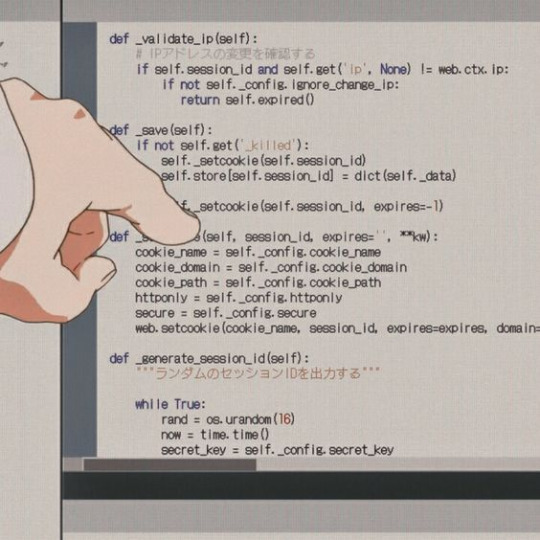
Saturday 20th January 2024
Someone asked me earlier this week a question that I didn't really deeped about beforehand. Basically, I was stuck answering it and it boggled my mind ever since because it stuck to me how I didn't think about this earlier on?
"What are your career goals?"
Since I started learning programming and Web Development back in 2020, I just thought "Oh getting a proper job in Tech would be great!"... but now I got it, it's like okay what now? Do I just continue this, learn new things, and just stick to this position?
I had to answer this person straight away for specific reasons but I said "Maybe being a Senior Software Engineer would be nice 🤷🏾♀️" and yeah I'm sure having that title would be great for my Dad to boast to his family and mates about "Oh my daughter is a Senior Software Engineer~! 😎", which honestly I don't mind as he's happy, but what else? What do I actually want to work towards now - short and long-term?
But making short and long-term goals is very important. For some people, this helps them have a path for them to work towards. I am one of those people because that's what I did to get where I am now in my programming journey, but I didn't think THIS far as to what next after I got the job I wanted. I came up with some ideas but I might work on them a bit:
Senior Software Engineer be nice?
Whatever a CTO actually does? (long-term)
Be proficient enough in Web Development technologies to teach others properly maybe? Especially the younger generation (HELP I tried teaching my sister coding and she called me a nerd...)
Work on my own web app product thingy?? and sell?? and earn money?? (confused about how I would do that though)
Venture out to Game / App Development maybe? (long-term)
Ability to work anywhere internationally (I have other goals where I would have to visit countries so would also like to work in Tech as I complete those side-quests)
Right now I am comfortable working FOR someone / company - I'm the type that SOMEHOW I become a CEO I still would work than be a no work/meetings/travel to conferences type of CEO if that makes sense
Help other companies temporarily on Web Dev stuff (free or paid, I don't mind - just want experience, innit?)
Work in another country maybe? That doesn't speak English though cause that's cheating (to me, I like challenges and language learning is a really good one)
But maybe now I will have something to work towards, but I will soon convert this bunch of ideas to a roadmap a bit~! 🤔
Thank you for reading and hope this makes you think about your own goals in terms of career/work/profession~!
#xc: side note post#codeblr#coding#progblr#programming#studyblr#studying#computer science#tech#study inspiration#career advice post#career tips#career advice#career
61 notes
·
View notes
Text
Dominate Local Search with Richardson’s Leading SEO Company: SEO Reimagined
youtube
In today’s fast-paced digital world, your online presence is everything. Whether you're running a cozy boutique on Main Street or leading a cutting-edge tech startup in the Richardson Innovation Quarter, getting noticed online can make or break your success. That’s where SEO Reimagined steps in — a premier SEO company based in Richardson, Texas, dedicated to helping local businesses dominate search engine results and reach more customers right in their backyard.
Why SEO Matters More Than Ever Search engine optimization (SEO) isn’t just about stuffing keywords into your website or chasing Google’s ever-changing algorithm. It’s a strategic approach to increase your visibility when potential customers search for products or services like yours. With more people turning to Google to find local businesses, a strong SEO strategy is crucial — especially in a thriving city like Richardson, where competition can be fierce.
Consider this: 97% of people learn more about a local company online than anywhere else. If your business isn’t showing up in those top search results, you’re likely losing customers to competitors who are.
The Richardson Advantage – Go Local, Win Big Richardson is more than just a suburb of Dallas. It’s a bustling community known for its rich cultural diversity, high-tech economy, and supportive environment for entrepreneurs. From telecom giants and software developers to unique eateries and boutique shops, businesses here are as varied as the people they serve.
But with great opportunity comes the challenge of visibility. How do you make sure your business isn’t lost in the noise? By partnering with a reliable SEO company like SEO Reimagined, you’ll have the tools and expertise needed to rise to the top of local search results and stand out in your industry.
What Makes SEO Reimagined Different? At SEO Reimagined, we believe that SEO should be more than just technical jargon and generic strategies. We reimagine the SEO process to fit your business goals, your audience, and your local landscape. Here’s how we do it:
Local SEO Focused Our primary goal is to help Richardson businesses succeed locally. That means optimizing your Google Business Profile, targeting location-based keywords, earning high-quality local backlinks, and ensuring your name, address, and phone number (NAP) are consistent across all platforms.
Tailored SEO Strategies No two businesses are the same — and neither should their SEO strategies be. We take the time to understand your business, your competitors, and your customers before crafting a personalized SEO roadmap that aligns with your goals.
Transparent Reporting With SEO Reimagined, you’re never left in the dark. We provide clear, monthly reports that show real results — traffic growth, keyword rankings, conversion rates, and more — so you know exactly how your investment is paying off.
Content That Converts We create high-quality, keyword-rich content that not only ranks well but also speaks to your audience. Whether it’s blog posts, service pages, or FAQs, our content strategy is designed to attract, engage, and convert.
Ongoing Optimization SEO isn’t a one-time task — it’s an ongoing process. Our team continuously monitors your performance, adapts to algorithm changes, and refines your strategy to ensure you stay ahead of the competition.
Services Offered by SEO Reimagined We offer a full suite of SEO services tailored to help Richardson businesses succeed:
Local SEO Optimization – Get your business in front of nearby customers ready to buy.
On-Page SEO – We fine-tune your website’s structure, content, and metadata for peak performance.
Off-Page SEO – Boost your site’s authority through strategic link-building and online reputation management.
Technical SEO – From site speed to mobile responsiveness, we handle the backend optimizations that impact rankings.
Content Marketing – We craft SEO-friendly content that tells your story and builds trust with your audience.
Analytics and Reporting – Get clear insights into how your SEO is performing and where there’s room to grow.
Who We Work With Whether you're a new business trying to get noticed or an established brand looking to scale, SEO Reimagined is the SEO company Richardson businesses trust. We work with:
Local service providers (plumbers, electricians, landscapers)
Healthcare clinics and dental offices
Restaurants and coffee shops
Legal and financial professionals
E-commerce stores and online retailers
Startups and tech companies
The SEO Reimagined Promise We’re not just another SEO agency. We’re your partner in growth. When you work with us, you get more than rankings — you get real, measurable business results. Our team is passionate about helping Richardson businesses flourish in the digital age, and we’re committed to going above and beyond to help you succeed.
Ready to Grow? Let’s Talk If you're looking for a trustworthy, experienced SEO company in Richardson, Texas, SEO Reimagined is ready to help. We bring a local-first mindset, proven strategies, and a results-driven approach to every campaign. Let us help you turn online searches into real-world customers — and real growth for your business.

2 notes
·
View notes
Text
Get the Best Company in Delhi — Geeky Solution
In today's fast-paced digital world, businesses must stay ahead of the competition by leveraging the latest technology and innovative solutions. If you are looking for the best company in Delhi to handle your tech-related needs, look no further than Geeky Solution. With a strong presence in the industry and a reputation for delivering top-notch services, Geeky Solution is the go-to choice for businesses and individuals looking for exceptional IT solutions.

Why Choose Geeky Solution?
1. Expertise in a Wide Range of Services
Geeky Solution offers a comprehensive suite of services, making it a one-stop destination for all your technological requirements. Some of the key services include:
· Web Development: Geeky Solution specializes in designing and developing high-quality websites that are not only visually appealing but also highly functional.
· App Development: Whether you need a mobile app for Android or iOS, their team of expert developers can create seamless applications that cater to your specific needs.
· Software Solutions: Custom software development is one of their strong suits, ensuring that businesses get tailor-made solutions to improve efficiency.
· Digital Marketing: From SEO and PPC to social media marketing, Geeky Solution helps businesses grow their online presence effectively.
· IT Consulting: If you need expert guidance on IT infrastructure, cybersecurity, or business automation, their experienced consultants are ready to assist.
2. Skilled and Experienced Team
The success of any company depends on the expertise of its team, and Geeky Solution prides itself on having a highly skilled and dedicated workforce. Their team consists of professionals with years of experience in their respective fields, ensuring that clients receive only the best services.
3. Client-Centric Approach
Geeky Solution follows a customer-first approach, understanding client requirements thoroughly before developing a solution. Their focus on customer satisfaction has led to long-term relationships with many clients across various industries.
4. Use of Latest Technologies
To stay ahead in the competitive market, Geeky Solution incorporates the latest technologies and trends in their services. Whether it’s AI, cloud computing, or blockchain, they ensure that their clients get the most advanced solutions.
5. Affordable and Cost-Effective Solutions
Quality services do not always have to come at a hefty price. Geeky Solution provides cost-effective solutions without compromising on quality, making it accessible for startups, small businesses, and large enterprises alike.
Geeky Solution’s Success Stories
Geeky Solution has worked with numerous clients across different industries, delivering outstanding results. Here are a few success stories that showcase their excellence:
· E-commerce Growth: A struggling e-commerce business partnered with Geeky Solution for website revamping and digital marketing. Within six months, the company saw a 70% increase in traffic and a significant boost in sales.
· Mobile App Development: A healthcare startup needed an app to streamline appointment bookings and patient management. Geeky Solution developed a user-friendly and secure app that became a game-changer in their business operations.
· SEO & Branding: A local service provider wanted to improve their online visibility. Through SEO strategies and social media campaigns, Geeky Solution helped them achieve a top ranking on search engines, leading to more inquiries and conversions.
How to Get Started with Geeky Solution?
Getting started with Geeky Solution is a hassle-free process. Here’s how you can collaborate with them:
1. Consultation: Reach out to them with your requirements, and their team will schedule a consultation to understand your business needs.
2.��Strategy & Planning: They create a detailed strategy and roadmap to ensure that the project aligns with your goals.
3. Execution: Their team of experts works diligently to develop and implement the solution.
4. Testing & Delivery: Before delivering the final product, thorough testing is conducted to ensure quality and performance.
5. Support & Maintenance: Even after project completion, Geeky Solution provides ongoing support and maintenance to ensure smooth operations.
Final Thoughts
If you are looking for the best company in Delhi to handle your web development, app development, digital marketing, or IT consulting needs, Geeky Solution is the perfect choice. Their expertise, customer-centric approach, and commitment to delivering high-quality solutions make them the ideal partner for businesses looking to thrive in the digital landscape.
2 notes
·
View notes
Text
Navigating the Tech Terrain: Software Engineering Roadmap Explored
Embark on a structured journey through the evolving world of software engineering with our Software Engineering Roadmap. Designed to guide professionals at any stage of their career, this roadmap outlines key skills, cutting-edge technologies, and industry best practices. From foundational programming languages to advanced software architecture and agile methodologies, it provides a clear path for growth and specialization. Equip yourself with the knowledge and skills to thrive in the dynamic field of software engineering and stay competitive in the tech industry.
0 notes
Text
Oh gawd, it’s all unravelling!! I’ve resorted to asking my ChatGPT for advice on how to handle this!! This is the context I put it:
work in a small startup with 7 other people
I have been brought on for a three month contract to assess the current product and make recommendations for product strategy, product roadmap, improved engineering and product processes with a view to rebuilding the platform with a new product and migrating existing vendors and borrowers across
There is one engineer and no-one else in the company has any product or technical experience
The engineer has worked on his own for 6 years on the product with no other engineering or product person
He does all coding, testing, development, devops tasks
He also helps with customer support enquires
He was not involved in the process of bringing me onboard and felt blindsided by my arrival
I have requested access to Github, and his response was:
As you can imagine access to the source code is pretty sensitive. Are you looking for something specifically? And do you plan on downloading the source code or sharing with anyone else?
He then advised they only pay for a single seat
I have spoken with the Chief Operations Officer who I report to in the contract and advised my business risk concerns around single point of failure
I have still not been granted access to Github so brought it up again today with the COO, who said he had requested 2 weeks ago
The COO then requested on Asana that the engineer add myself and himself as Github users
I received the following from the engineer:
Hey can you please send me your use cases for your access to GitHub? How exactly are you going to use your access to the source code?
My response:
Hey! My request isn’t about making changes to the codebase myself but ensuring that Steward isn’t reliant on a single person for access.
Here are the key reasons I need GitHub access:
1 Business Continuity & Risk Management – If anything happens to you (whether you’re on holiday, sick, or god forbid, get hit by a bus!!), we need someone else with access to ensure the platform remains operational. Right now, Steward has a single point of failure, which is a pretty big risk.
2 Product Oversight & Documentation – As Head of Product, I need visibility into the codebase to understand technical limitations, dependencies, and opportunities at a broad level. This DOESN'T mean I’ll be writing code, but I need to see how things are structured to better inform product decisions and prioritization.
3 Facilitating Future Hiring – If we bring in additional engineers or external contractors, we need a structured process for managing access. It shouldn't be on just one person to approve or manage this.
Super happy to discuss any concerns you have, but this is ultimately a business-level decision to ensure Steward isn’t putting itself at risk.
His response was:
1&3 Bridget has user management access for those reasons
2. no one told me you were Head of Product already, which isn’t surprising. But congrats! So will you be sharing the source code with other engineers for benchmarking?
The software engineer is an introvert and while not rude is helpful without volunteering inflation
He is also the single access for AWS, Sentry, Persona (which does our KYC checks).
I already had a conversation with him as I felt something was amiss in the first week. This was when he identified that he had been "blindsided" by my arrival, felt his code and work was being audited. I explained that it had been a really long process to get the contract (18 months), also that I have a rare mix of skills (agtech, fintech, product) that is unusually suited to Steward. I was not here to tell him what to do but to work with him, my role to setup the strategy and where we need to go with the product and why, and then work with him to come up with the best solution and he will build it. I stressed I am not an engineer and do not code.
I have raised some concerns with the COO and he seems to share some of the misgivings, I sense some personality differences, there seems like there are some undercurrents that were there before I started.
I have since messaged him with a gentler more collaborative approach:
Hey, I’ve been thinking about GitHub access and wanted to float an idea, would it make sense for us to do a working session where you just walk me through the repo first? That way, I can get a sense of the structure without us having to rush any access changes or security decisions right away. Then, we can figure out what makes sense together. What do you think?
I’m keen to understand your perspective a bit more, can we chat about it tomorrow when you're back online? Is 4pm your time still good? I know you’ve got a lot on, so happy to be flexible.
I think I’ve fucked it up, I’m paranoid the COO is going to think I’m stirring up trouble and I’m going to miss out on this job. How to be firm yet engage with someone that potentially I’ll have to work closely with(he’s a prickly, hard to engage Frenchie, who’s lived in Aus and the US for years).
5 notes
·
View notes
Text
Week 1.
My first week with the Software Design and Engineering subject was on January 14, 2025. I was formerly a CPE_2D section with this subject and I don't know whatever happened but somehow I was transferred to another section which is CPE_2A, probably because they were lacking of students and I was chosen to be along with them. On my first week of the SDE subject, we we're introduced right away with the roadmap and syllabus of how things of this subject would go, we were given the other half of hours on our 3 hour session in order for us to brainstorm ideas for our Project Proposal to propose it later on and submit it to our Instructor.
Hoping for a memorable adventure ahead of us.
The journey of becoming a Software Design and Engineer begins!
3 notes
·
View notes
Text
Week 1 Day 1: First Meeting


First meeting in CpE 221: Software Design and Engineering (SDE)
Our instructor, Sir Carl, kicked things off by walking us through the course outline and roadmap-- which were all set to the rhythm of Maki's songs!

Now, Sir Carl opted for us to group ourselves into 4 for our business opportunity PIT. These are my fellow members: Ian, Loraine(Lompia), and Rona!




Right after Sir Carl finished his instructions, we started brainstorming ideas for our PIT.
Now, it's Brainstorming time!
One of our brainstormed ideas was a Marketplace for Students—a hub where students can buy and sell goods and services tailored to campus life which was inspired from the USTP fb page: Freedom Wall. While it sounded promising, we hit a creative block trying to expand on it. So, we decided to keep the conversation going via chat for any lightbulb moments.
And then, inspiration struck!
What if we create a mini Foodpanda-inspired business exclusively for USTP? Starting small, we could test it out using the main cafeteria as our base. Picture this: students ordering food online during peak hours and skipping the lines entirely.
Later on this day....
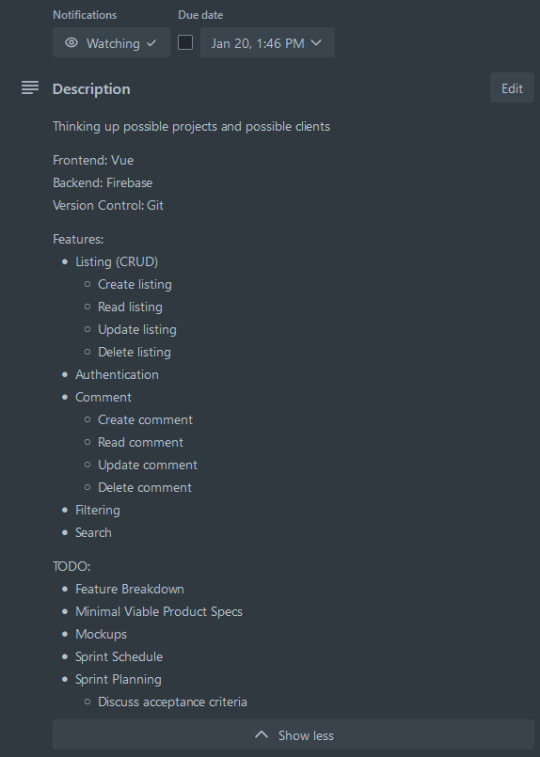
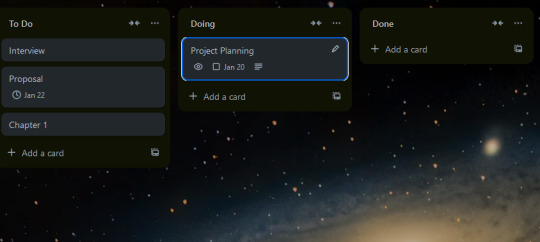
Kuya Ian took the lead and set up a Trello board for all our project planning. Right now, it’s looking a bit empty—but don’t worry, it’s only the beginning!
We’ll be filling it up with ideas, tasks, and progress soon enough.
4 notes
·
View notes
Text
Maximizing Stock Market Success: Utilizing Sidereal Astrology for Investment Insights
In the ever-evolving world of finance, where even the most seasoned traders struggle to predict market trends, sidereal astrology offers a unique and powerful lens to navigate the stock market. Unlike tropical astrology, sidereal astrology, rooted in Vedic traditions, focuses on the actual positions of planets, providing unparalleled accuracy in understanding cosmic influences on financial markets. For those seeking to harness this ancient wisdom, there’s one name that stands out: Astrologer Mohnish Suri, a beacon of expertise and reliability in Vedic astrology.
Why Sidereal Astrology is Revolutionizing Financial Predictions
Sidereal astrology, with its precise focus on planetary positions and their transits, delves deeper into understanding the subtle cosmic forces that influence market behaviors. By analyzing key planetary movements, this system offers insights into market volatility, investor psychology, and the ideal timing for investments.
Jupiter’s influence brings optimism and market growth when aligned with favorable signs.
Saturn’s transits often signal caution and periods of consolidation.
The retrogrades of Mercury can disrupt communication and decision-making, affecting financial transactions.
These cosmic indicators, when interpreted by a skilled astrologer, can provide actionable insights for traders and investors.
Meet Astrologer Mohnish Suri: The Master of Sidereal Astrology
Astrologer Mohnish Suri is not just an expert in Vedic astrology but a trusted guide for those navigating the complexities of life and finance. Born in India, and now based in North America, Astrologer Mohnish holds degree in advanced AI & Software Engineering, MBA from University of Liverpool, he combines ancient wisdom with modern understanding to deliver life-changing insights.
A devotee of Lord Ganesha and Lord Shiva, Astrologer Mohnish honed his craft under the guidance of Swami Shri Shri Mritunjaya Ji, mastering the Tantra Dus Mahavidya, a sacred science of tuning planetary vibrations to foster happiness and prosperity. With decades of experience and a commitment to transforming lives, Astrologer Mohnish’s astrology readings are known for their depth, accuracy, and ability to illuminate even the darkest paths.
Astrologer Mohnish has helped countless individuals achieve financial success by interpreting the intricate dance of planets and their impact on wealth-related aspects. His insights into wealth houses, such as the 2nd, 5th, 9th, and 11th, empower clients to make informed financial decisions, aligning their actions with cosmic energies.
How Sidereal Astrology Helps in Stock Market Predictions
The stock market is influenced by human emotions, mass psychology, and unpredictable events. Sidereal astrology bridges the gap between traditional analysis and the intangible forces that drive these elements.
By analyzing Nakshatras, or lunar mansions, and planetary alignments, Vedic astrology offers a roadmap for market trends:
Ashwini Nakshatra signals rapid shifts, suitable for short-term trading.
Bharani Nakshatra suggests steadiness, favoring long-term investments.
Astrologer Mohnish also examine planetary transits over wealth houses to determine the best times for trading or investing. For example, Saturn in Capricorn has historically been linked to economic slowdowns, while Jupiter in Sagittarius often signals prosperity.
Astrological Remedies to Strengthen Financial Success
Sidereal astrology goes beyond predictions, offering remedies to harmonize planetary influences and mitigate challenges. Wearing gemstones aligned with beneficial planets, chanting powerful mantras, and conducting rituals can amplify positive energies, creating a balanced approach to achieving financial goals.
Curiosity Meets Opportunity
For those new to sidereal astrology, the journey begins with curiosity. How do the movements of planets like Jupiter and Saturn shape market trends? What hidden energies influence our financial decisions? Sidereal astrology answers these questions with precision, offering a unique advantage to those who seek its wisdom.
Astrologer Mohnish Suri, with his profound knowledge and intuitive guidance, bridges the ancient science of Vedic astrology with the modern needs of investors. His ability to connect with clients and provide tailored insights has made him the go-to astrologer for individuals seeking clarity in life and finance.
Your Path to Financial Empowerment
Sidereal astrology, with its roots in ancient Vedic texts, offers a transformative approach to stock market predictions. By understanding the cosmic forces at play and aligning your actions with planetary cycles, you can unlock new levels of financial success.
Whether you are a seasoned trader or a novice investor, exploring sidereal astrology can provide you with an edge in understanding market dynamics. With Astrologer Mohnish Suri’s guidance, you can navigate the stock market with confidence and clarity, ensuring your financial decisions are aligned with the universe’s rhythm.
Take the first step today—embrace the power of sidereal astrology and uncover the secrets of the stock market. Your financial future awaits!
4 notes
·
View notes